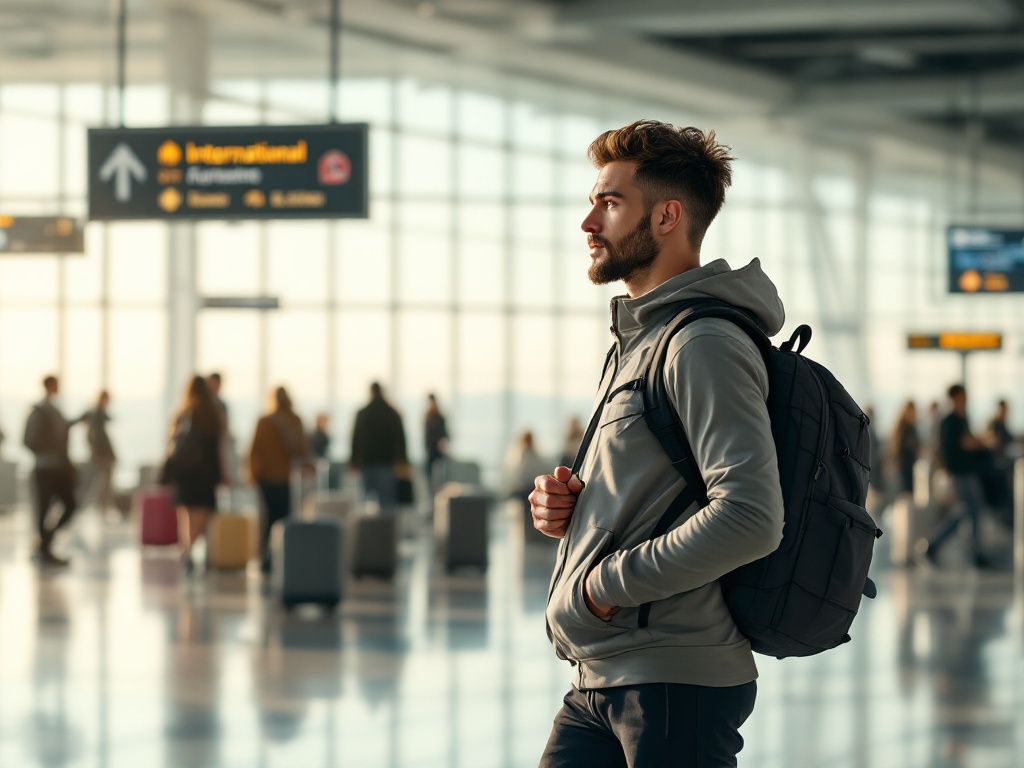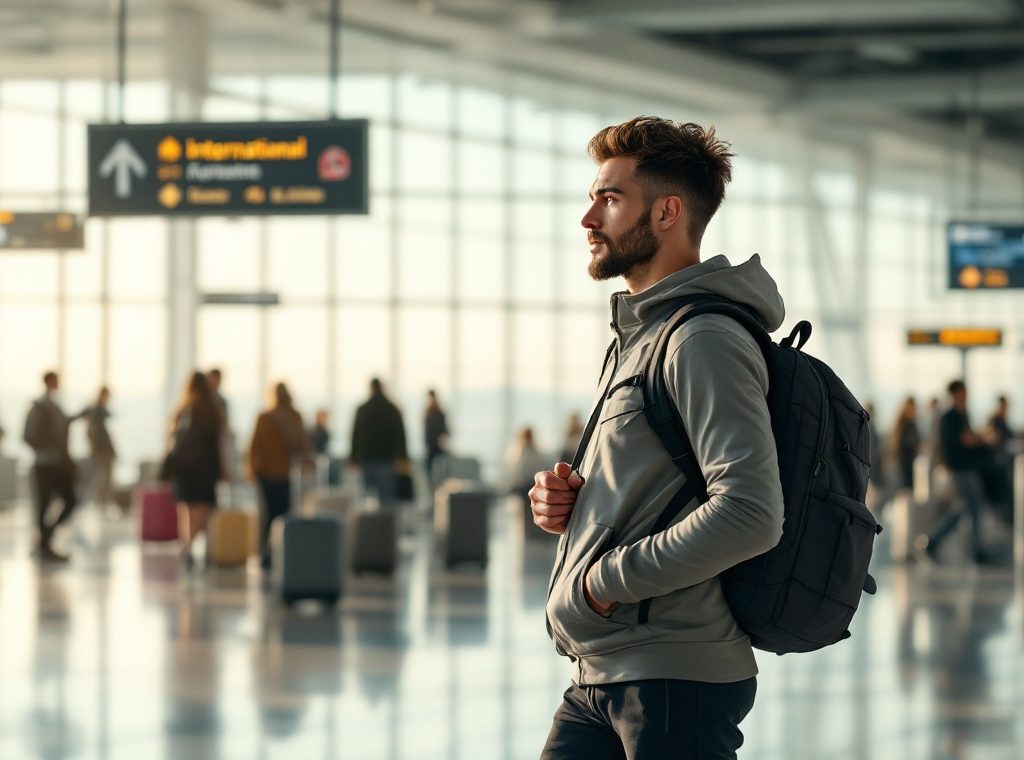Safety Tips for Solo Athletes Traveling Abroad
Traveling as an athlete, especially solo and internationally, presents unique safety challenges. Careful planning is essential. This guide provides crucial advice, from securing comprehensive travel insurance and sharing your itinerary to practicing situational awareness and utilizing local resources. Learn how to choose safe accommodations, transportation, and dining options, plus essential health and emergency preparedness tips. Empower yourself with the knowledge to travel safely and confidently as an athlete abroad. Read on to prepare for a secure and successful trip.
Important information

- Research your destination: Learn about local customs, laws, and potential safety hazards. Consult government travel advisories for up-to-date information.
- Get comprehensive travel insurance: Ensure it covers sports injuries, medical emergencies, and lost belongings.
- Share your itinerary: Provide a detailed itinerary, including accommodation, transportation, and planned activities, to a trusted contact. Maintain regular check-ins with them.
- Prioritize personal safety: Be aware of your surroundings, limit distractions, and trust your instincts. Secure your valuables and consider a personal safety alarm.
- Prepare for emergencies: Carry a basic first-aid kit and know local emergency numbers. Research safe transportation options and ask locals for advice upon arrival.
Travel Preparation and Planning
Traveling solo as an athlete, especially in a foreign country, requires careful planning with safety as the top priority. Thorough research on local customs, laws, and potential hazards is essential. Consulting government travel advisories can provide valuable insights. Comprehensive travel insurance is crucial, covering sports-related incidents, medical emergencies, and loss of belongings. Sharing a detailed itinerary with a trusted contact adds another layer of security. This itinerary should include accommodation details, transportation plans, and planned activities. Regular check-ins, such as daily messages, will reassure your contact of your well-being. A basic first-aid kit is recommended, but review airline regulations for permitted items.
Research your destination thoroughly. Learn about local customs, laws, and potential safety hazards.
Consult government travel advisories for up-to-date information and safety recommendations.
Secure comprehensive travel insurance. Ensure it covers sports-related injuries, medical emergencies, and lost belongings.
Share a detailed itinerary with a trusted contact. Include accommodation details, transportation plans, and planned activities.
Maintain regular check-ins with your contact. Daily messages or calls can provide reassurance and a way to track your well-being.
Pack a basic first-aid kit. Be sure to review airline regulations regarding permitted items before traveling.
Checking Travel Warnings and Advisories
Before traveling, consult your government’s travel advisories for essential safety information. Resources like the US State Department and the UK Foreign Office provide such guidance. Destination-specific guides also offer valuable safety tips.
Importance of Travel Insurance
Travel insurance is essential for protecting yourself from unforeseen issues like medical emergencies, trip cancellations, or lost luggage. Comprehensive coverage is crucial, offering financial protection for medical expenses, including those from sports injuries—a vital detail for athletic travelers. It also safeguards against trip disruptions and protects your belongings, providing peace of mind so you can focus on enjoying your adventure. Here’s why travel insurance matters:
Medical Protection
Covers medical expenses abroad, including hospital stays, doctor visits, and emergency medical transportation, offering crucial financial support during unexpected health crises. Sports injuries are also covered, which is essential for travelers participating in adventurous activities.
Trip Protection
Safeguards against trip cancellations, interruptions, and delays, reimbursing prepaid, non-refundable trip costs. This provides financial security if unforeseen circumstances force you to alter or cancel your travel plans.
Belongings Protection
Covers lost, stolen, or damaged luggage and personal belongings, providing financial compensation for essential items during your trip. This helps mitigate the stress and cost of replacing lost possessions.
Peace of Mind
Travel insurance provides peace of mind, allowing you to fully enjoy your trip without worrying about potential disruptions or unforeseen events. Focus on your adventure, knowing you have a safety net.
Creating an Emergency Response Plan
Familiarize yourself with local emergency numbers and locate the nearest hospital. This is a crucial safety step. Establish a communication plan to connect with family or friends.
Accommodation Safety
Safe travels start with secure lodging. Choose reputable hotels or rentals with robust safety features. Consider location, reviews, and safety ratings. Thorough research is essential. Keep loved ones informed of your itinerary and check in regularly. This connection is a lifeline in emergencies.
Choose reputable hotels or rentals with robust safety features, such as 24/7 security personnel, well-lit common areas, and secure locks.
Consider the location of your accommodation, opting for areas known for their safety and proximity to emergency services.
Read reviews and check safety ratings from previous guests to understand potential risks and security measures.
Keep loved ones informed of your travel plans, including your itinerary and accommodation details, and check in with them regularly.
Planning Safe Accommodations
Research the neighborhood’s safety online by checking crime statistics and local news. Hotel reviews often mention safety concerns, so review them carefully. Consider these key factors for your peace of mind:
- street lighting,
- hotel security measures,
- proximity to police stations and hospitals.
Staying Connected with Family and Friends
Stay connected with your loved ones while traveling. Share your itinerary details and check in regularly via phone, email, or text messages. Consider using location-sharing apps for real-time updates and increased peace of mind. Establish a consistent check-in schedule and promptly inform your contacts of any changes to your travel plans.
Personal Safety and Situational Awareness
Boost your safety with situational awareness. Stay alert to your surroundings and potential dangers. Ditch the headphones; hearing your environment is key. Trust your instincts—if a situation feels wrong, remove yourself immediately. Keep valuables out of sight to deter thieves. Avoid flaunting expensive items or cash. A personal safety alarm can offer extra security, but your best defense remains awareness. Here are some key personal safety tips to remember:
Be Aware of Your Surroundings
Constantly scan your environment for potential threats. Notice exits, safe havens, and anything out of the ordinary. Pay attention to the people around you and their behavior.
Limit Distractions
Avoid using headphones or constantly looking at your phone, especially in unfamiliar or high-risk areas. These distractions reduce your awareness of your surroundings and make you an easier target.
Trust Your Gut
If a situation or person makes you feel uneasy, trust your instincts and remove yourself from the situation immediately. Don’t worry about being polite; your safety is paramount.
Secure Your Valuables
Keep valuables like wallets, phones, and jewelry out of sight. Don’t flaunt expensive items or large amounts of cash. Consider using a money belt or hidden pockets.
Consider a Personal Safety Alarm
Carrying a personal safety alarm can provide an extra layer of security. While it’s not a replacement for vigilance, it can deter attackers and attract attention if you’re in danger.
Practicing Situational Awareness
Heighten your awareness.
Eliminate distractions like your phone and headphones.
Scan your surroundings.
Note who’s around and any potential hazards.
This vigilance can protect you.
Trusting Your Instincts
If a situation feels off, trust your gut and leave immediately. Don’t dismiss your instincts; they’re often your best guide to staying safe. If a person or place makes you uneasy, remove yourself. Your safety is paramount.
Keeping Valuables Hidden
Safeguard your valuables by keeping them out of sight and avoid openly displaying expensive electronics like cameras and phones. This discourages potential thieves.
Use anti-theft bags for additional security.
Secure important documents and electronics in your hotel safe and carry only the cash you need.
Consider tracking devices for valuable equipment. These can be invaluable for recovering a lost camera, for instance.
Maintain digital copies of essential documents in case originals are lost or stolen.
Use a buddy system for added protection when training outdoors; watch each other’s belongings.
Public Transportation Safety
Smart travel planning prioritizes safety. Thorough research is key when selecting transportation providers. Opt for reputable companies and steer clear of unlicensed taxis or rideshares, as these pose significant risks. Local advice can be invaluable. Talk to residents for safety tips, recommended routes, and neighborhood insights. They can also suggest the safest transport, particularly crucial after dark. Furthermore, avoid waiting alone for public transport at night.
Research transportation providers thoroughly. Choose reputable companies with a proven track record of safety and reliability.
Avoid unlicensed taxis or rideshares. These options often lack proper safety regulations and insurance, putting you at greater risk.
Seek local advice. Talk to residents for safety tips, recommended routes, and insights into specific neighborhoods.
Inquire about the safest transportation options. Locals can provide valuable information, especially regarding transportation after dark.
Avoid waiting alone for public transport at night. If possible, travel with a companion or arrange for a safe pickup or drop-off location.
Choosing Safe Transportation Options
Plan your transportation in advance to ensure a smooth trip. Pre-booking a car service or using a reliable ride-sharing app is recommended, especially for nighttime travel. While waiting, choose well-lit and busy areas, such as near a store or restaurant. Research reputable taxi companies and public transport routes beforehand. Airport transfers and hotel shuttles provide safe and convenient options for arrivals and departures.
Asking Locals About Safety
Upon arrival, inquire with locals about the safety of bus stops and train stations, especially at night. They can offer valuable insights into the safest routes and areas to avoid, potentially suggesting a taxi or an alternative bus route. While their advice is invaluable, remain vigilant, even in seemingly safe areas.
Health and Emergency Preparedness
When traveling, a well-stocked first aid kit is indispensable for handling minor injuries and illnesses. Be sure to pack essential items:
- bandages,
- antiseptic wipes,
- pain relievers,
- any personal medications.
Equally important is knowing local emergency numbers for medical assistance, police, and fire departments. Research these in advance or find them upon arrival. This preparedness can ensure quick access to help and contribute to a safer trip.
Carrying a First Aid Kit
A first aid kit is essential for any trip, allowing you to quickly address minor injuries and health issues. Pack necessities like bandages, antiseptic wipes, pain relievers, and personal medications. A well-stocked kit lets you treat common travel ailments immediately, contributing to a safer and healthier trip. Consider including a thermometer and motion sickness medication. While a small cut can be easily treated with your kit, serious injuries will require professional medical care. Ultimately, a first aid kit offers peace of mind and preparedness for unexpected situations.
Benefits of having a first aid kit:
- Addresses minor injuries and health issues quickly,
- allows for immediate treatment of common travel ailments,
- contributes to a safer and healthier trip,
- offers peace of mind and preparedness for unexpected situations.
Essential items for your first aid kit:
- Bandages,
- antiseptic wipes,
- pain relievers,
- personal medications,
- thermometer,
- motion sickness medication.
Knowing Local Emergency Numbers
Prioritizing athlete safety during training abroad is crucial. Before you go, take these important steps:
Research and save local emergency numbers. Find the equivalent of 911 or 112 in your destination country.
Locate the nearest hospital or clinic to your training location. Note its address and contact information.
Save these emergency contacts in your phone. Ensure they are easily accessible.
Write down the emergency numbers and locations in a physical notebook. This serves as a backup if your phone is unavailable.
Being prepared is the best way to ensure your safety while training abroad.
Dining Alone and Self-Reliance
Dining solo offers valuable opportunities for self-reflection and fosters independence. Choose vibrant, well-lit restaurants, and consider sitting at the bar to potentially meet new people. Inform someone of your dining location. This practice cultivates confidence and hones problem-solving abilities. Familiarizing yourself with basic local phrases can significantly improve communication and simplify navigation. Offline maps and translation apps are essential, especially in areas with unreliable internet access. Most importantly, trust your intuition; if a situation feels unsafe, remove yourself.
Enhance Your Solo Dining Experience
- Select bustling, well-lit venues.
- Consider bar seating for social interaction.
- Share your dining location with someone.
Navigate with Confidence
- Learn essential local phrases.
- Utilize offline maps and translation apps.
- Prioritize your safety and trust your instincts.
Dining Alone Safely
Choose well-lit and busy restaurants.
Avoid deserted locations.
Be aware of your surroundings.
Drink alcohol in moderation.
Never leave your food or drinks unattended.
Keep your belongings secure.
If you feel uncomfortable, leave immediately.
Developing Self-Reliance
Self-reliance is key for confident solo travel. This involves making independent decisions, resourcefully navigating unfamiliar locations, and solving problems on your own. This adaptability empowers athletes to effectively handle unexpected challenges. Self-reliance fosters a sense of freedom by reducing dependence on others, a crucial skill for solo athletes venturing into unknown territory.


















